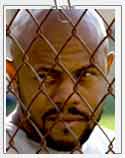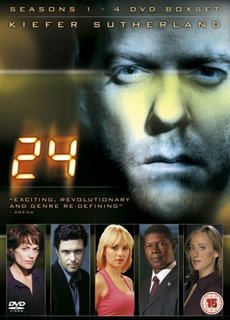Blaxploitation
I will also study how the African American representation in Prison Break is stereotypical, being in a prison as a result comitted crimes.
http://www.answers.com/topic/blaxploitation
Blaxploitation films starred primarily black actors, and were the first to feature soundtracks of funk and soul music. Although criticized by civil rights groups for their use of stereotypes, they addressed the great and newfound demand for Afrocentric entertainment, and were immensely popular among black audiences. The blaxploitation genre officially began in 1971 with the release of Sweet Sweetback’s Baadasssss Song. This remained the premise of the early blaxploitation films; film by, for, and about black people.
Stereotypes
These films were made for an African American audience and often showed negative depictions of Caucasian characters; whites were often cast as crooked and racist police officers or government officials, and the racial slur “honky” was frequently used toward them. Italian Americans were frequently portrayed negatively as drug dealing members of the Mafia whom black characters would often rip off. Anti-Italian epithets such as “dago” and “wop” were used in conjunction with “honky” against these characters.
At the same time, the films also created a negative stereotype of African Americans, the audience they were designed to appeal to, as pimps and drug dealers. This stereotype fit with common white stereotypes about black people, and as a result many called for the end of the Blaxploitation genre. The National Association for the Advancement of Colored People, the Southern Christian Leadership Conference, and the Urban League joined together to form the Coalition Against Blaxploitation. Backed by many black film professionals, this group received much media exposure and quickened the death of the genre by the late 1970s.
This would related to Prison Break because the Prison Officer is very racist. Also, Michael Scofield's ceel mate Sucre is one of the main characters who has been stereotypically represented as he held up a liquor store. Also, another of Michael's helpers is C- Note who possessed stolen goods an
an d supplies the cellmates with drugs.
d supplies the cellmates with drugs.
I will also study how the African American representation in Prison Break is stereotypical, being in a prison as a result comitted crimes.
http://www.answers.com/topic/blaxploitation
Blaxploitation films starred primarily black actors, and were the first to feature soundtracks of funk and soul music. Although criticized by civil rights groups for their use of stereotypes, they addressed the great and newfound demand for Afrocentric entertainment, and were immensely popular among black audiences. The blaxploitation genre officially began in 1971 with the release of Sweet Sweetback’s Baadasssss Song. This remained the premise of the early blaxploitation films; film by, for, and about black people.
Stereotypes
These films were made for an African American audience and often showed negative depictions of Caucasian characters; whites were often cast as crooked and racist police officers or government officials, and the racial slur “honky” was frequently used toward them. Italian Americans were frequently portrayed negatively as drug dealing members of the Mafia whom black characters would often rip off. Anti-Italian epithets such as “dago” and “wop” were used in conjunction with “honky” against these characters.
At the same time, the films also created a negative stereotype of African Americans, the audience they were designed to appeal to, as pimps and drug dealers. This stereotype fit with common white stereotypes about black people, and as a result many called for the end of the Blaxploitation genre. The National Association for the Advancement of Colored People, the Southern Christian Leadership Conference, and the Urban League joined together to form the Coalition Against Blaxploitation. Backed by many black film professionals, this group received much media exposure and quickened the death of the genre by the late 1970s.
This would related to Prison Break because the Prison Officer is very racist. Also, Michael Scofield's ceel mate Sucre is one of the main characters who has been stereotypically represented as he held up a liquor store. Also, another of Michael's helpers is C- Note who possessed stolen goods
 an
an d supplies the cellmates with drugs.
d supplies the cellmates with drugs.C-note Sucre


